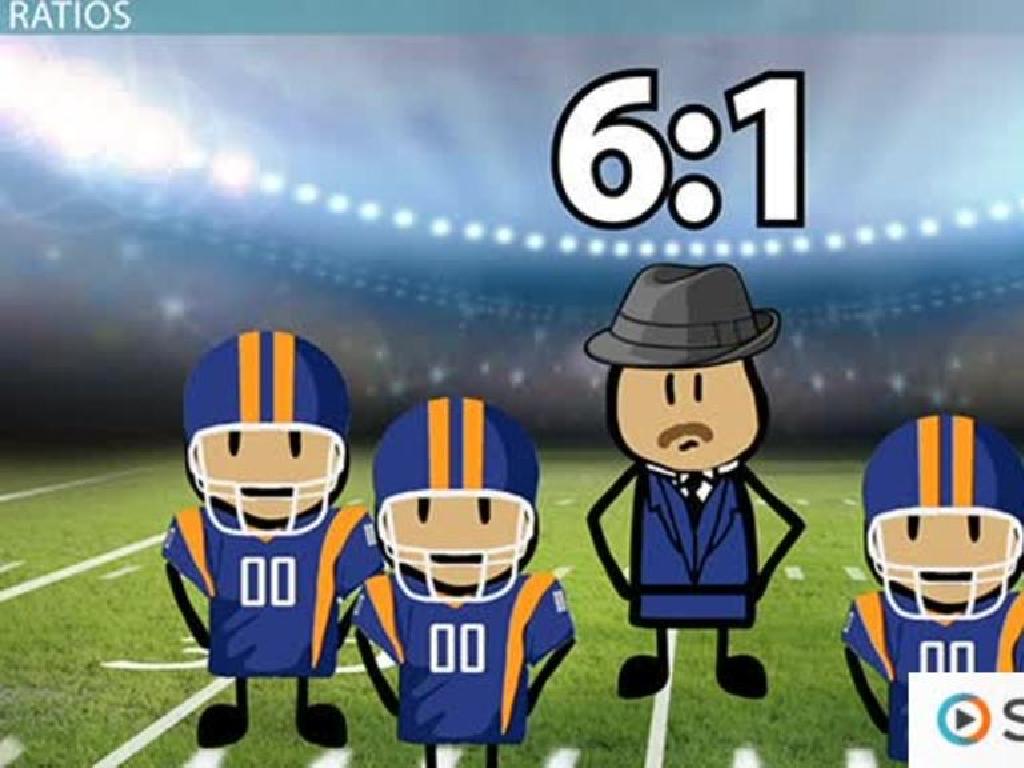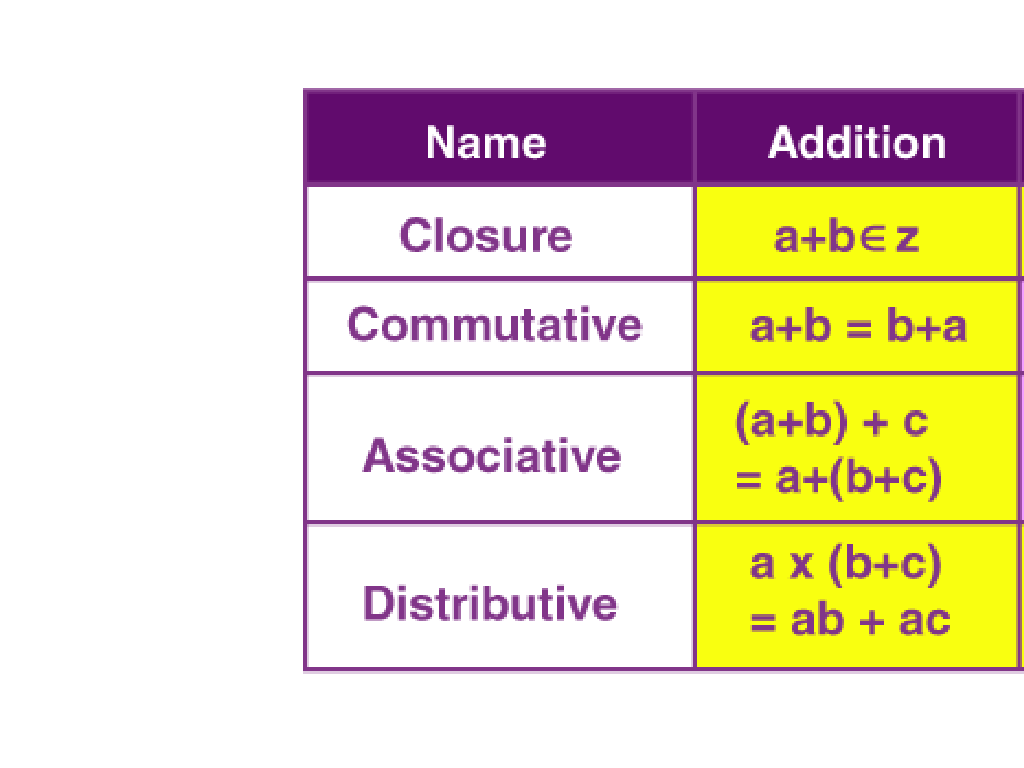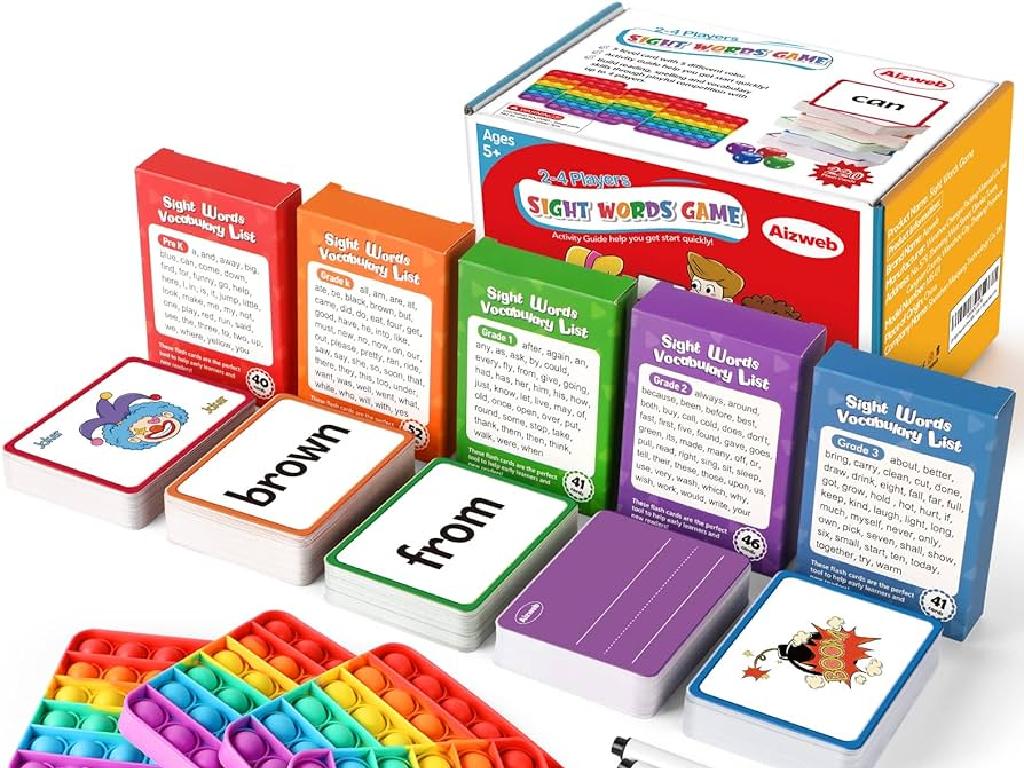Relate Multiplication And Division
Subject: Math
Grade: Fifth grade
Topic: Division
Please LOG IN to download the presentation. Access is available to registered users only.
View More Content
Understanding Multiplication & Division
– Multiplication & division are inverse
– If 3 x 4 = 12, then 12 ÷ 4 = 3
– Master one to understand the other
– Knowing multiplication helps solve division problems faster
– Real-life examples
– Using recipes or dividing a pizza among friends
– Practice problems
|
This slide introduces the concept that multiplication and division are inverse operations, meaning they undo each other. Emphasize that a strong grasp of multiplication tables can greatly assist in understanding and performing division. Provide real-life scenarios where both multiplication and division are used, such as following a recipe that requires doubling or halving ingredients, or dividing a set number of items evenly among a group. Encourage students to think of their own examples. Conclude with practice problems to reinforce the relationship between these two operations.
Understanding Multiplication in Division
– Multiplication: repeated addition
– It’s like adding the same number over and over.
– Example: 3 x 4 as 3 groups of 4
– Visualize 3 groups with 4 items in each to get 12.
– Group activity with multiplication facts
– Practice multiplication facts together in class.
|
This slide introduces the concept of multiplication as a form of repeated addition, which is a foundational skill for understanding division. Use the example of 3 x 4 to illustrate how multiplication is essentially adding the number 4, three times. The group activity should involve students working together to practice and memorize multiplication facts, which will aid in their understanding of division as the inverse operation. Provide students with multiplication charts or flashcards to enhance their learning experience. The goal is to ensure that students can fluently multiply numbers as this skill is crucial for learning division.
Understanding Division
– Division: Sharing or grouping
– Division splits a number into equal parts
– Example: 12 ÷ 3
– 12 items shared into 3 groups gives 4 items per group
– Group practice activity
– Solve simple division problems together
– Discuss division outcomes
|
This slide introduces the concept of division to the students, explaining it as a method of sharing or grouping items equally. Use the example of 12 ÷ 3 to show how 12 items can be divided into 3 equal groups of 4. For the activity, provide students with simple division problems and have them work in groups to solve them. This will help reinforce their understanding of division as an equal sharing process. Encourage students to discuss how they arrived at their answers and what division means in practical terms. The teacher should prepare several sets of objects or illustrations for the students to physically group, enhancing their grasp of the concept.
Connecting Multiplication and Division
– Fact families explanation
– If 3 x 4 = 12, then 12 ÷ 4 = 3 and 12 ÷ 3 = 4
– Inverse operations in math
– Multiplication and division are opposites
– Activity: Create a fact family
– Use 3 numbers to write 2 multiplication and 2 division sentences
|
This slide introduces the concept of fact families and how multiplication and division are related as inverse operations. Start by explaining that a fact family consists of three numbers that are related by multiplication and division. Show that if you know one multiplication fact, you can find two division facts. For the activity, guide students to choose any three numbers and write their own set of related multiplication and division sentences. Provide examples and encourage creativity. For the teacher: Prepare to offer additional fact family examples and facilitate the activity by ensuring students understand the concept of ‘inverse operations’. Have materials ready for students to create visual representations of their fact families.
Word Problems: Multiplication & Division
– Apply multiplication/division in problems
– Use math to solve real-life scenarios
– Read and understand the problem
– Identify keywords and what’s being asked
– Pair activity: solve word problems
– Work with a partner to find answers
– Discuss solutions and methods
– Share your strategies with the class
|
This slide introduces students to the application of multiplication and division in solving word problems, which is a critical skill in fifth-grade math. Start by explaining how these operations can be used to solve practical problems. Emphasize the importance of carefully reading and understanding the problem before attempting to solve it. For the activity, students will pair up to work on a set of word problems provided by the teacher. Encourage them to discuss their thought processes and problem-solving strategies with their partner. After the activity, facilitate a class discussion where pairs can share their solutions and the methods they used to arrive at them. This will help students learn from each other and understand different approaches to solving math problems.
Class Activity: Multiplication & Division Relay
– Teams compete in math relay
– Solve multiplication problems
– Each team member solves one multiplication problem
– Solve division problems
– Each team member solves one division problem
– Race to finish first
|
This activity is designed to encourage teamwork and reinforce the relationship between multiplication and division. Divide the class into small groups, ensuring a mix of abilities in each team. Provide each team with a set of multiplication and division problems. They must work together, with each member solving one problem before passing to the next. The first team to correctly solve all their problems wins. Prepare different sets of problems for each team to prevent copying and encourage all students to participate. Possible variations include a relay format where students must run to a station to solve a problem or a ‘math scavenger hunt’ where each solved problem provides a clue to the next.
Wrapping Up: Multiplication & Division
– Recap: Multiplication vs. Division
– Multiplication and division are inverse operations; one undoes the other.
– Daily life applications
– Use to plan events, cooking recipes, and budgeting money.
– Homework: Practice Worksheet
|
As we conclude today’s lesson, remind students of the key concept that multiplication and division are closely related as inverse operations. Emphasize real-world applications such as dividing a pizza among friends or multiplying ingredients in a recipe to serve more people. For homework, assign a worksheet with a mix of multiplication and division problems to reinforce their understanding. Encourage students to think of other everyday scenarios where they can apply these math skills. The worksheet should cater to different levels of difficulty to challenge all students.






